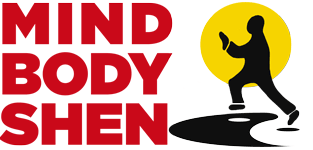
Tai Ch'i information
Tai Ch’i our the grand ultimate fist is slow, graceful exercise program has shown great results in increased strength and muscle tone, enhanced range of motion and flexibility, and improved balance and coordination.
T’ai Ch’i offers a variety of "quality of life" benefits such as improved concentration, an increased sense of well-being, decreased feelings of stress, more energy, improved posture, and better circulation.
T’ai Ch’i Ch’uan is known for it’s low intensity, low-impact form of exercise which is becoming especially well suited for those recovering from an injury; and because it's a weight-bearing exercise, it's also helpful for preventing the brittle-bone disease, osteoporosis.
Tai Ch'i exercises encompass a set of "forms. Each form is a series of postures strung together into one continuous movement. These forms can range from 13 movements up to 108 movements and may take as long as 20 minutes to complete.
Tai Ch’i is based upon Ch’i, a vital force thought to flow through the body. Tai chi utilizes the universal principles forces of Yin and Yang. Each movement incorporates the polarities of Yin and Yang through the actions of empty and full, fast and slow, hard and soft.
Tai Ch'i improves health by breaking up blockages in the flow of chi, thus reestablishing balance in the body's supply of vital force.
T’ai Chi's low-intensity movements have an aerobic affect on the heart and vascular system. Focused attention on movements encourages mental alertness, while relaxing body and mind.
T’ai Ch’i is a safe and effective method of exercise and relaxation for most everyone, young or old, athletic or not. Although the exercises are generally performed while standing, and there is a lot of emphasis on shifting weight from one leg to another, the movements can be adapted to permit participation using wheel-chairs or walkers.
The forms are flexible enough to allow each person to perform to his "personal best."
The main T'ai Chi Ch'uan Family styles
started at Chen villiage in Wen County. Henan
1.Chen Style / Founder : Chen Chang Xin
2.Yang Style / Founder : Yang lu shan
3.Wu Style / Founder : Wu Chun-Yu
4.Li Style /Founder: LiYi-Yu
5.Sun Style / Founder : Sun Lu-Tan
Chen Style
The Chen Style is known as being very dynamic, low stances and Fa Jin (explosive force). It is fast and slow, combined with jumps and stamping the floor. Chen Style is the mother to all other styles.
Yang Style
The moves in Yang style are slow, gentle, even and big. Characteristics of the Yang style are that the weight displacement is more 60/40 and that the back is more vertical when compared to our Yang style is the most widespread style in the world
Wu Style
Wu Style is slow, soft, small and the stances are high. Wu Yu-hsiang (Wu Yuxiang) learned from Yang Ban-hou (son of Yang Lu-chan) and Chen Qingping (14th generation Chen style).
Sun Style
The Sun Style Tai Chi Chuan is an inner martial arts discipline, in which characteristic elements of Xingyiquan, Bagua Zhang and Taijiquan/Tai Chi Chuan has been combined. The Sun style is characterised by fast and agile movements
Three Treasures
l. Qi : Energy
2. Jing : Essence
3. Shen: Spirit
13 Postures of T'ai Chi Ch'uan
Eight Gate (Pa-Men)
I.Peng (ward off)
2.Lu (rollback)
3.An (push)
4.Ghi (press)
5.kao (shoulder)
6.zou (elbow)
7.Lieh (split)
8.Tsai (pull down)
Five Steps (Wu-Pu )
1.Looking right
2.Looking left
3.Forward
4.Backwards
5. Central
Basic Kung fu terms
Wushu: Chinese martial arts.
Kung Fu (gong fu) – Work Skill. A high level of skill developed through long hard practice.
Nei Kung (Nei Gong) – Internal Work
Chi Kung, qigong – Energy work. A system or method of working with the bodies energy. There are many different kinds of chi kung and many different schools of thought. Tai Chi is one type of Chi Kung.
Chi: An intrinsic energy which circulates in all living things.
Dantien: The storage of qi that is located about two inches beneath the navel.
Fa Jing: To release the internal force
Jing: Power; flow of energy.
YI: Mind.
Li: Muscular Power, strength.
Chin Na: Seize and control techniques.
Push Hands- A drill or game allows students to practice energetics and movement against an opponent.
Chuan: Fist.
Shen: Spirit. The consciousness within which the mind and thought function.
Sung: (soong) relax, relaxation mentally and physically; releasing any tension in the mind and body.
Taiji (Tai Chi): Grand Ultimate.
Tai Chi Chuan: Grand Ultimate Fist.
Yi: Mind (focused attention).
Yin and Yang: The traditional Chinese philosophical concepts of opposites that conceptually define and seek balance in all endeavors
Yang – Male, fast, aggressive, hard, light, hot, etc… The opposite/complement of Yin.
Yin – Female, slow, yielding, soft, dark, cold, etc… The opposite/complement of Yang.
Basic Greetings
-
Good – Hao (sounds like How).
-
Very good-Hěn Hǎo (Hen How)
-
not good-Bù Hǎo (Boo How).
-
Goodbye – Zai Jian
-
Hello – Ni Hao ( Nee How)
-
How Are You? – Ni Hao Ma
-
Thank You – Xie Xie




